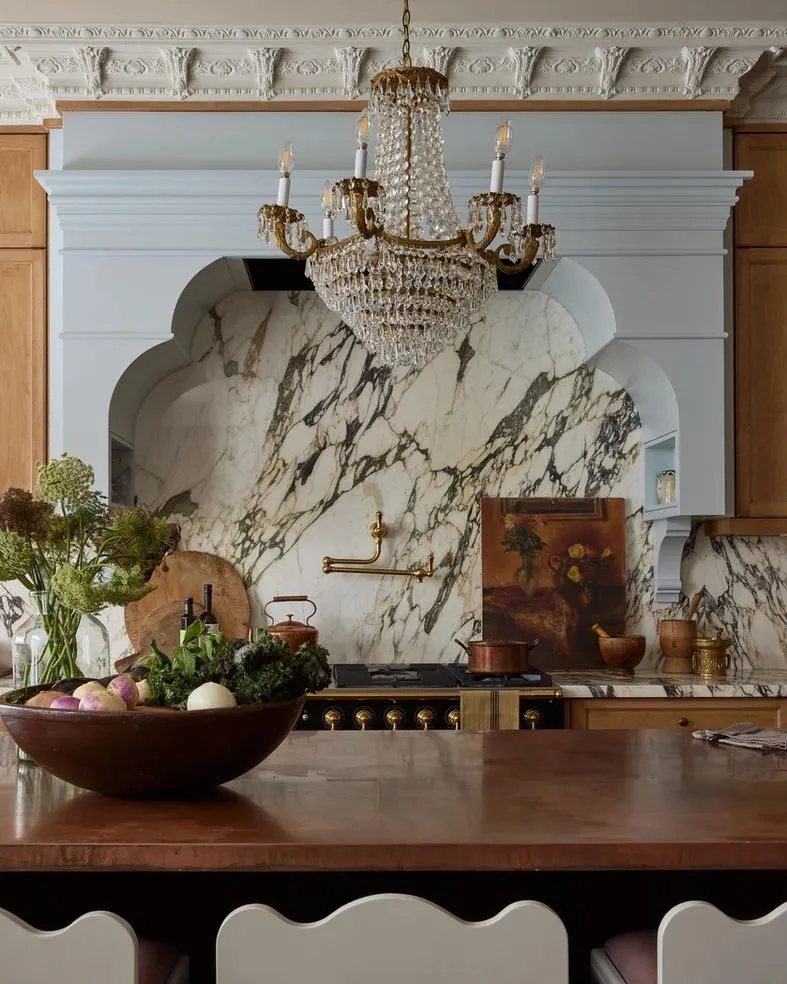Why Personalised Kitchen Decor Matters
The kitchen, often hailed as the heart of the home, transcends its utilitarian purpose to become a space of culinary creativity, social gathering, and cherished memories. Personalised kitchen decor allows you to transform this essential area into a reflection of your unique personality, lifestyle, and aesthetic preferences. Moving beyond generic designs, customising your kitchen allows you to create a space that resonates with you, fostering a sense of comfort, inspiration, and joy every time you step inside. The power of personalisation extends beyond mere aesthetics; it can significantly enhance the functionality and overall experience of your kitchen.
When your kitchen decor aligns with your tastes and needs, the space becomes more inviting and efficient. This alignment simplifies daily tasks, whether you are a seasoned chef or a casual cook, creating a seamless flow that enhances your enjoyment of the space. Moreover, a personalised kitchen fosters a deeper connection to your home. It allows you to showcase your personal style, celebrate your memories, and create a space that feels truly your own. This level of personalisation promotes a sense of well-being and can significantly improve your quality of life, making your kitchen a cherished sanctuary within your home. By investing in personalised kitchen decor, you are investing in a space that nourishes both your body and your soul.
Creating a Personalised Kitchen Design The Foundation
The foundation of any successful personalised kitchen design lies in understanding your needs, preferences, and how you intend to use the space. Begin by conducting a thorough self-assessment. Consider your cooking habits. Are you a frequent cook who requires ample counter space and storage, or do you prefer a simpler approach? Reflect on your lifestyle and family dynamics. Do you need a space that accommodates casual dining, homework sessions, or entertaining guests? These initial considerations will guide your design choices. Evaluate your existing kitchen. Identify the elements you love and those you wish to change. Make a note of the layout, appliances, and architectural features. This analysis allows you to build upon the positive aspects while addressing the shortcomings.
Explore various design styles to find one that resonates with you. Research design magazines, online platforms like Pinterest and Instagram, and home improvement shows. Gather inspiration and create mood boards that reflect your preferences. Consider the overall tone and atmosphere you wish to achieve in your kitchen. Do you desire a warm and inviting space, a sleek and modern environment, or a rustic and charming retreat? The design style will influence your choices of colours, materials, and accessories. Establish a budget and a timeline. Personalised kitchen design can involve various levels of investment, from minor cosmetic changes to comprehensive renovations. Defining your budget and setting a realistic timeline will help keep your project on track and ensure you achieve the desired outcome without overspending or creating unnecessary stress. With these initial steps, you can lay a strong foundation for designing a kitchen that is uniquely yours.
Selecting the Right Colour Palette
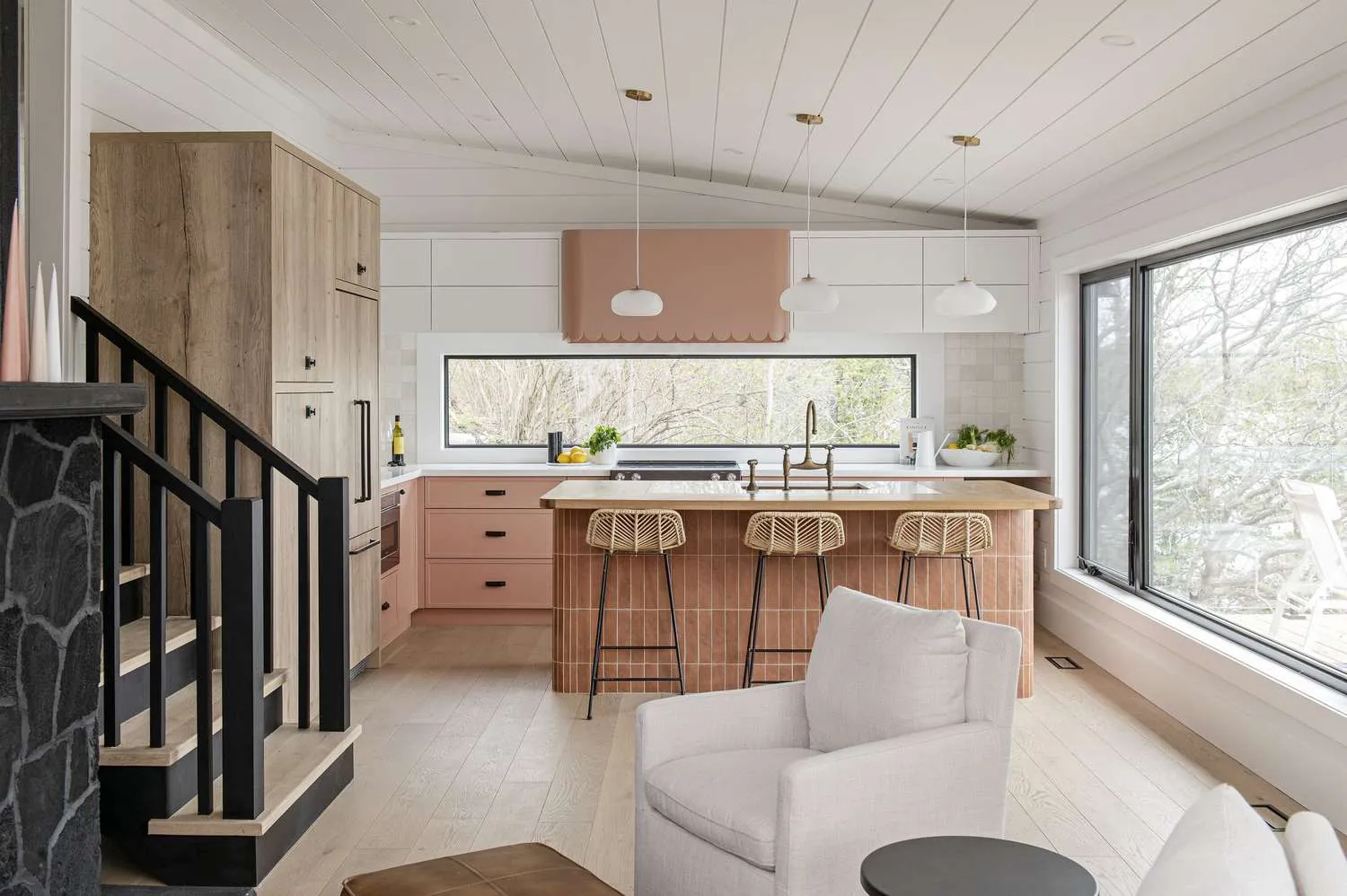
The colour palette is a crucial element of any kitchen design, as it sets the tone and influences the overall ambiance. Consider the size and natural light of your kitchen when choosing colours. Lighter colours can make a small kitchen appear larger and brighter, while darker colours can create a cozy and intimate atmosphere. However, be mindful of the potential impact on visual space. Start with a base colour, such as white, gray, or a soft neutral. This base colour will serve as the foundation for your design and provide a sense of continuity throughout the space. Then, select accent colours that complement the base colour and reflect your personal style. These accent colours can be used on cabinetry, walls, or through decorative elements. Consider your preferred aesthetic and the mood you wish to create.
Explore colour psychology to understand the emotional impact of different colours. For instance, blue and green are often associated with calmness and serenity, while yellow and orange can stimulate energy and creativity. The right colour combinations can dramatically transform your kitchen. Consider a classic combination of white and gray for a timeless and elegant look, or experiment with bold colours like navy blue or emerald green for a more dramatic effect. When selecting paint colours, test samples on your walls to see how they appear in the kitchen’s natural and artificial lighting. This practical step ensures the chosen colours harmonize with your space. Select colours for cabinets, walls, and accents to complement your chosen style. Think about the overall flow and visual appeal of your kitchen, and how the colours work together to reflect your personality and create the desired atmosphere.
Choosing the Perfect Kitchen Cabinetry
Kitchen cabinetry is a defining feature, significantly influencing both aesthetics and functionality. The style of your cabinets plays a pivotal role in shaping the overall look and feel of your kitchen. Consider options such as traditional raised-panel cabinets for a classic and elegant design, or sleek, flat-panel cabinets for a modern and minimalist aesthetic. Shaker-style cabinets, with their simple, recessed panels, are versatile and blend well with various design styles. Select materials that align with your design preferences and lifestyle. Wood cabinets offer warmth and natural beauty, available in various finishes and species. Laminate cabinets are budget-friendly and offer durability and easy maintenance, while metal cabinets bring a contemporary touch. When making your choice, weigh the pros and cons of each material.
Cabinet hardware is an excellent opportunity to add a personalised touch. Choose knobs and pulls that complement the cabinet style and your overall aesthetic. Consider the finish of the hardware, such as brushed nickel, oil-rubbed bronze, or sleek chrome, to create the desired effect. Customise your cabinetry with features that cater to your specific storage needs and workflow. Install pull-out drawers for easy access to pots and pans, incorporate spice racks for organised seasoning, and include corner cabinet solutions to maximise space. Consider integrated appliances for a streamlined appearance and enhanced functionality. Incorporate glass-fronted cabinets to display your favourite dishware and decorative items, adding visual interest and a personalised touch to your kitchen. Thoughtful cabinetry design promotes both efficiency and style.
Adding Personal Touches Through Decor
Decorations are where your personality shines, infusing the space with warmth and character. Consider items that are meaningful to you. Display family photos, travel souvenirs, or heirloom pieces. These items tell a story and connect you to your kitchen on a deeper emotional level. Incorporate decorative accents that reflect your interests and hobbies. If you’re a passionate cook, display your favorite cookbooks and kitchen gadgets. If you love art, hang paintings or prints that inspire you. Consider the colour palette, the overall design style, and the existing features of your kitchen when selecting your decorations. This will help ensure that the decorative accents harmonise with the rest of the space.
Incorporate various textures to add visual interest and create a more inviting atmosphere. Use textured materials such as woven baskets, ceramic pots, or wooden cutting boards. Vary the heights and sizes of your decorative items to create a visually balanced and dynamic display. Layering decor is an effective way to add depth and create a cohesive look. Use a combination of different sized objects to create a visual hierarchy. Update your decor seasonally or periodically to keep your kitchen feeling fresh and exciting. Choose items that reflect the current season or a particular holiday, ensuring that your kitchen remains a source of inspiration and joy throughout the year. The thoughtful use of decor turns your kitchen into a reflection of your unique personality, transforming it into a space you’ll cherish for years to come.
Displaying Artwork and Photos
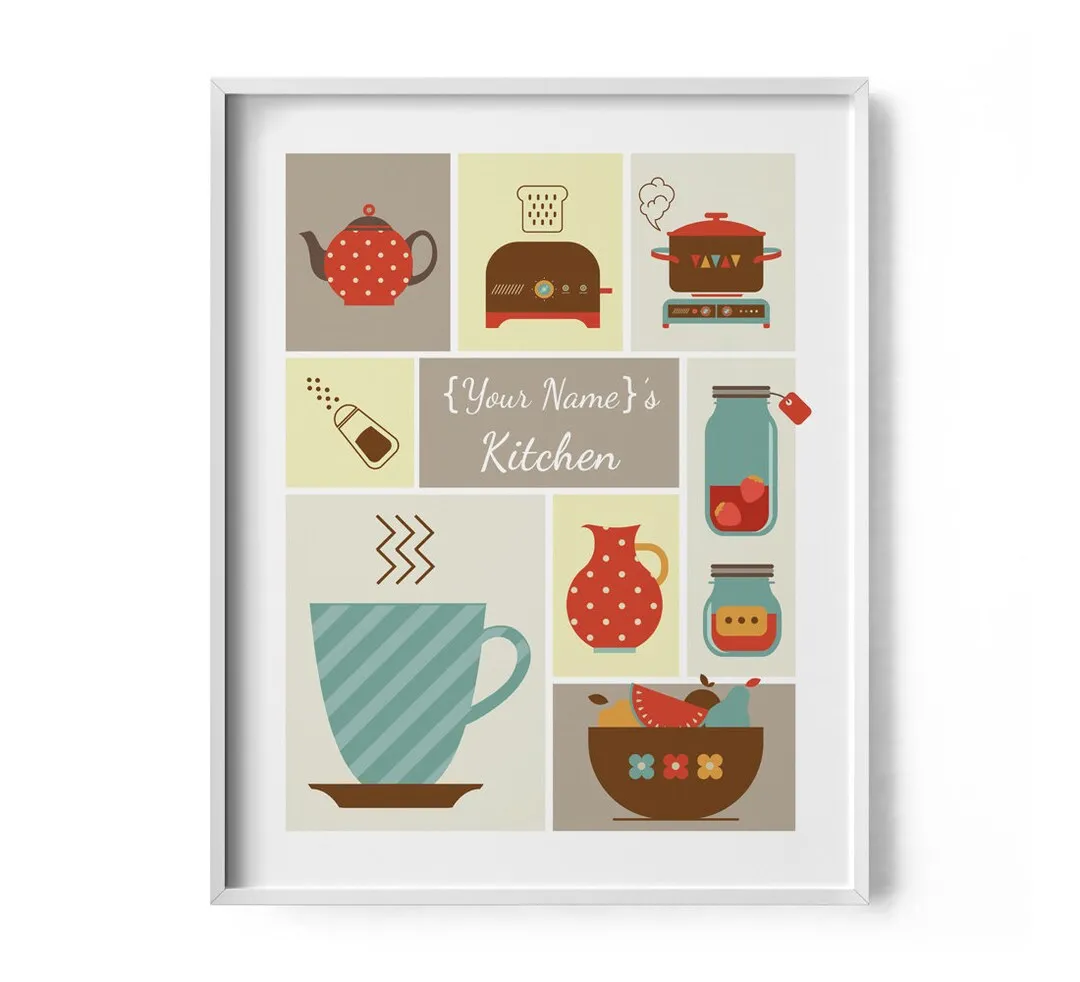
Artwork and photos add a personal touch to your kitchen. Choose artwork that reflects your taste and preferences. Consider paintings, prints, or sculptures that resonate with you. Opt for pieces that complement the colour palette and design style of your kitchen, ensuring a cohesive aesthetic. Select images that evoke positive emotions and add interest to your space. Display family photos and create a gallery wall of cherished memories. Use a variety of frame styles and sizes to add visual interest, ensuring that the overall arrangement is balanced and visually appealing. To protect your artwork, choose suitable framing materials and consider the kitchen’s exposure to moisture and heat. This will ensure that your art remains in excellent condition over time.
Position your artwork strategically to enhance the overall design. Hang artwork above the sink or countertop to create a focal point. Consider the lighting in your kitchen, and use appropriate lighting to highlight your artwork. Use accent lighting, such as track lighting or spotlights, to illuminate your paintings and sculptures effectively. Update your artwork periodically to keep your kitchen looking fresh and exciting. Rotate your artwork seasonally or as your tastes evolve. This allows you to continually express your personality and add a dynamic element to your kitchen design. By carefully selecting and displaying artwork and photos, you can transform your kitchen into a space that is both visually stunning and deeply personal.
Incorporating Personalised Textiles
Textiles add softness, texture, and personality. Use curtains or window treatments that complement your kitchen’s design. Select fabrics that are durable and easy to clean, especially in a kitchen environment. Consider colours and patterns that align with your chosen aesthetic. Incorporate table linens, such as tablecloths and placemats, to enhance your dining experience. Choose fabrics that are both functional and stylish. Use tea towels and dishcloths that reflect your personal style, and consider choosing colourful and patterned options. These can add a pop of colour and add visual interest. Cushions on chairs or benches can add both comfort and a touch of personality. Choose fabrics that coordinate with the existing decor, adding texture and visual appeal.
Choose textiles that reflect your lifestyle and preferences. Consider durable and stain-resistant fabrics for high-traffic areas. Select materials such as linen or cotton for a natural and comfortable feel. Incorporate patterns and colours that express your personality. Ensure that the textiles are easy to clean and maintain, ensuring longevity and practicality. Keep your textiles coordinated with other decor elements. This enhances the overall look and creates a cohesive design. Change your textiles seasonally or as your tastes evolve. This provides an easy way to update the look of your kitchen and add a fresh, vibrant feel. The intelligent use of textiles will transform your kitchen into a comfortable and stylish space that reflects your unique style.
Using Unique Kitchen Accessories
Kitchen accessories are the finishing touches that add personality and functionality. Choose unique items that reflect your interests and hobbies. Consider decorative items that align with the overall design style of your kitchen. Consider a display of antique cooking tools for a rustic-inspired space, or select modern and minimalist accessories for a contemporary kitchen. Display your favourite cookbooks and kitchen gadgets. Arrange them in a way that is both visually appealing and easily accessible. Use open shelving to showcase your favourite items. This adds a personal touch while also providing easy access to your frequently used items. Select accessories that enhance functionality. Choose storage containers, utensil holders, and other items that help you to organise your space.
Personalise your kitchen by using vintage or antique accessories. These items add character and a sense of history. Consider accessories that reflect your heritage or background. This adds a unique and personal touch to your kitchen. Choose accessories that are both practical and aesthetically pleasing. This adds an interesting contrast. Ensure that your kitchen accessories complement your overall design style. Choose items that enhance the visual appeal of your kitchen. Update your accessories periodically. This is a simple way to refresh the look and keep your kitchen looking fresh. Use unique kitchen accessories to create a space that is as beautiful as it is functional. These additions enhance the overall aesthetic and transform the kitchen into a true reflection of your personal style.
Maximising Space and Functionality
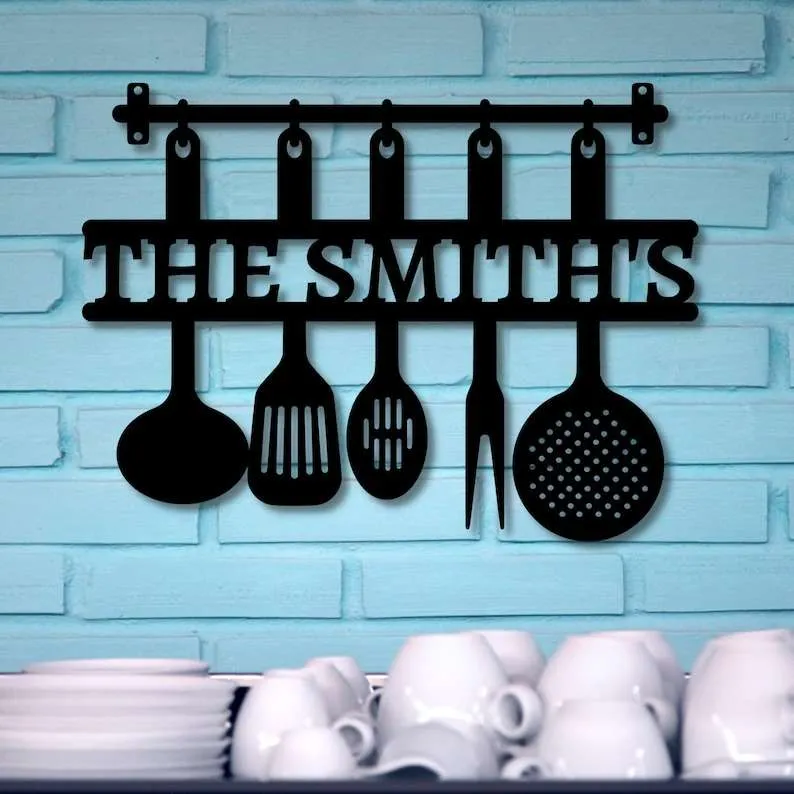
Efficient use of space is key in any kitchen, especially in smaller ones. Install smart storage solutions to maximise the use of available space. Use pull-out shelves, corner cabinet organisers, and drawer dividers. Organise your countertops and utilise vertical space to keep your kitchen neat and clutter-free. Incorporate multifunctional appliances and furniture to save space. Choose a kitchen island with built-in storage or an extendable dining table. Think about the ergonomics of your kitchen layout. Consider the placement of appliances, countertops, and work areas to create an efficient and comfortable workflow. Designate specific zones for cooking, cleaning, and food preparation, ensuring that your kitchen is a space where you can move about easily.
Personalise your kitchen layout to fit your specific cooking and lifestyle needs. Customise your kitchen to provide comfort and facilitate productivity. Choose open shelving or glass-front cabinets to display your kitchen essentials and make them easily accessible. Ensure that the kitchen layout encourages a smooth workflow, reducing unnecessary steps. Incorporate lighting that enhances both functionality and ambiance. Choose appropriate lighting to create zones, with task lighting focused on work areas. Ensure adequate lighting within cabinets and drawers for ease of access. Maximising space and functionality leads to a kitchen that is not only beautiful but also incredibly practical. A well-designed space promotes productivity, and ease of use.
Organising Your Kitchen for Style and Efficiency
Organising your kitchen streamlines your workflow and enhances its visual appeal. Declutter your kitchen regularly. Remove items you no longer use or need. Minimise unnecessary clutter, ensuring that only essential items are left on the countertops. Implement effective storage solutions. Use clear containers and labels to keep food and other items organised. Group similar items together to make them easy to find. Organise your pantry to optimise the storage space. Use shelves, drawers, and containers to store food items efficiently. Consider utilising vertical space by installing shelves or racks. Organise your utensils and cooking tools. Use utensil holders, drawer organisers, and hanging racks to keep items readily accessible.
Maintain an organised kitchen to ensure efficiency and enjoyment. Regularly clean your kitchen appliances, including the refrigerator, dishwasher, and oven. Maintain clean surfaces. Wipe down counters and tables after each use. Ensure that the kitchen is well-maintained to ensure proper functionality. Consider incorporating a cleaning schedule to maintain a high level of cleanliness. Regularly assess your organisation methods to see if they are still meeting your needs. Optimise your organisation system by making adjustments as needed. A well-organised kitchen saves time, reduces stress, and creates a more enjoyable cooking and living environment.
Kitchen Lighting and Ambiance
Lighting plays a critical role in enhancing the functionality and ambiance of a kitchen. Layer your lighting to create the desired effect. Combine ambient, task, and accent lighting to achieve a balanced and well-lit space. Choose fixtures that complement your kitchen design and the specific purpose of each area. Install ambient lighting, such as recessed lighting, to provide general illumination throughout the kitchen. Incorporate task lighting, such as pendant lights over the kitchen island or under-cabinet lights, to illuminate specific work areas. Use accent lighting, such as track lighting or spotlights, to highlight artwork, architectural features, or decorative elements. Select fixtures that create the desired ambiance and enhance your kitchen’s aesthetic appeal.
Consider the colour temperature of your lights. Use warm white light for a cozy and inviting atmosphere, and cool white light for a bright and energetic feel. Choose lighting fixtures that are both energy-efficient and aesthetically pleasing. Install dimmers to control the intensity of your lights and adjust the ambiance based on the occasion. Consider using smart lighting systems to control your lights remotely and automate your lighting schedule. The right lighting can transform your kitchen into a space that is both functional and aesthetically pleasing. Proper lighting enhances the usability and makes your kitchen a comfortable space that caters to your needs.
Selecting the Right Light Fixtures

The light fixtures you choose influence the overall aesthetic and functionality. Select fixtures that align with your kitchen’s design style. Consider a variety of fixture styles, such as pendants, chandeliers, recessed lights, and sconces. Choose the right size and scale for each fixture, considering the size of your kitchen and the area it will illuminate. Incorporate pendants over the kitchen island or dining area, adding visual interest and task lighting. Use recessed lights to provide general illumination, creating a seamless and streamlined appearance. Install sconces to add accent lighting and complement your kitchen’s design aesthetic. Choose fixtures made of materials that complement your kitchen’s overall design. Consider materials like metal, glass, wood, and fabric, ensuring a cohesive aesthetic.
Prioritise energy efficiency when selecting your light fixtures. Choose LED bulbs, which are both energy-saving and long-lasting. When selecting your light fixtures, consider how the lights will affect the overall look. Ensure that your chosen light fixtures provide sufficient illumination for your tasks while creating the desired ambiance. Consider the colour temperature of the light bulbs. This impacts the overall look and feel. Ensure that the colour temperature aligns with your style and the kitchen’s existing design. The right choice of light fixtures will transform your kitchen into a space that is both functional and aesthetically pleasing. Proper light fixtures improve the usability and make your kitchen a comfortable space.
Optimising Natural Light
Maximising natural light brightens your kitchen and connects it to the outdoors, creating a more inviting atmosphere. Keep your windows clean and unobstructed. Wash windows regularly to ensure that sunlight can freely enter your kitchen. Use window treatments that allow for the maximum amount of natural light. Choose sheer curtains, blinds, or shades that filter the light without blocking it entirely. Install skylights or sun tunnels to increase the natural light in your kitchen. Position your kitchen near windows or incorporate glass doors to allow natural light to flood your kitchen. Consider the placement of your kitchen within the home to maximise the amount of sunlight. Orient your kitchen to take advantage of the natural light throughout the day.
Use light-coloured walls and surfaces to reflect natural light. Select light colours for walls, cabinetry, and countertops to brighten the space and create an open feel. Incorporate mirrors into your kitchen design to reflect natural light, creating a brighter and more spacious environment. Position mirrors strategically to bounce light around the room, maximising its impact. The benefits of natural light include enhancing the aesthetic appeal and improving your mood and well-being. Consider the time of day and the direction of the sunlight when planning your kitchen design. Maximize the amount of sunlight throughout the day. Maximising natural light will transform your kitchen into a brighter, more inviting, and more functional space.
Maintaining and Updating Your Personalised Kitchen
Maintaining and updating your kitchen ensures it remains a reflection of your changing needs. Establish a regular cleaning and maintenance routine. Regularly clean your kitchen to keep it in top condition. Regularly wipe down surfaces, clean appliances, and sweep or mop the floors. Protect your countertops from spills, scratches, and heat damage. Seal countertops to prevent stains, and use trivets and cutting boards to protect their surfaces. Regularly check and maintain your kitchen appliances, including your refrigerator, dishwasher, and oven. Schedule professional maintenance as needed. Regularly check for any leaks, cracks, or other damage. Addressing these issues promptly will help prevent further damage.
Update your decor periodically to keep your kitchen feeling fresh and inspiring. Replace textiles, add new accessories, and update artwork to reflect changing tastes. Consider making small cosmetic changes, such as repainting cabinets or changing hardware. This is a cost-effective way to give your kitchen a new look. As your lifestyle changes, consider making larger updates or renovations. Modify your kitchen layout to meet changing family needs. Stay up to date with the latest design trends and consider integrating new features. Maintaining and updating your kitchen ensures it remains a space you will enjoy for years to come, reflecting your evolving needs and personal style.
Regular Cleaning and Maintenance
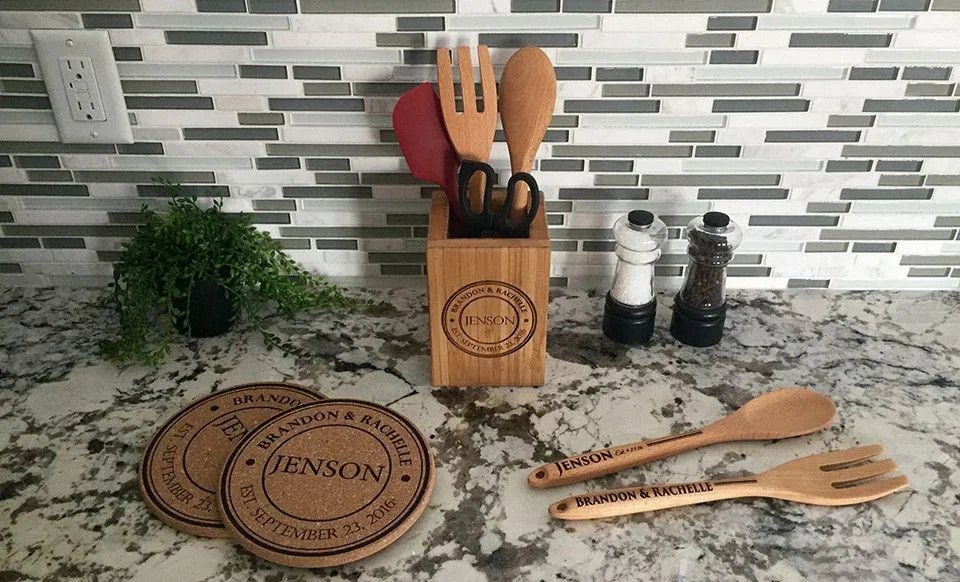
A regular cleaning and maintenance routine is crucial to preserving the beauty and functionality of your kitchen. Clean your countertops daily. Wipe down countertops after each use. Use appropriate cleaning products for your countertops. Clean your appliances regularly. Wipe down the exterior surfaces of your refrigerator, dishwasher, and oven. Clean the interior of your appliances to maintain efficiency. Clean your floors frequently, sweeping or mopping regularly. Use appropriate cleaning products for your flooring material. Regularly wipe down your cabinets. Use a damp cloth or appropriate cleaning solution to remove dust and grime from the cabinets. Ensure that the kitchen is well-ventilated to reduce moisture and prevent mould growth. Routinely inspect your kitchen for any damage. Addressing issues quickly can prevent the need for more extensive repairs.
Incorporate a regular cleaning schedule into your routine, establishing a consistent pattern. Schedule deep cleaning sessions. Schedule deep cleaning sessions to clean out of reach areas. Consider using eco-friendly cleaning products. These are environmentally friendly and safe. The effort you put into regularly cleaning your kitchen will keep it looking its best, promoting hygiene and cleanliness. Proper cleaning and maintenance can extend the life of your kitchen and preserve its functionality. A clean and well-maintained kitchen is a more enjoyable space to cook, dine, and spend time.
Updating Decor as Your Tastes Evolve
Decorating is a dynamic process, so it is important to adapt your decor. Change your decor seasonally to reflect the changing seasons, such as incorporating festive decor during the holidays. Replace textiles regularly. Swap out your curtains, table linens, and dish towels to inject fresh colour and patterns. Update your artwork. Rotate your artwork to keep the kitchen looking fresh and add visual interest. Make small cosmetic changes, such as repainting cabinets, changing hardware, or adding a new backsplash. These small updates can have a big impact. Add new accessories. Incorporate new accessories, such as vases, bowls, or decorative items, to reflect your personal style. This helps maintain a fresh and dynamic look.
When updating your decor, consider current design trends, but choose items that reflect your personal preferences. Experiment with different design styles to find what works best for you. Ensure that you love the items you select. Consider the function and practicality of each item when updating the decor. Update your kitchen decor as your lifestyle and tastes evolve. This will keep your kitchen in line with your personal growth and change. Refreshing the look of your kitchen keeps it looking current, and can make it more inspiring. Updating your decor is a simple way to revitalise your space and reflect your changing tastes.
